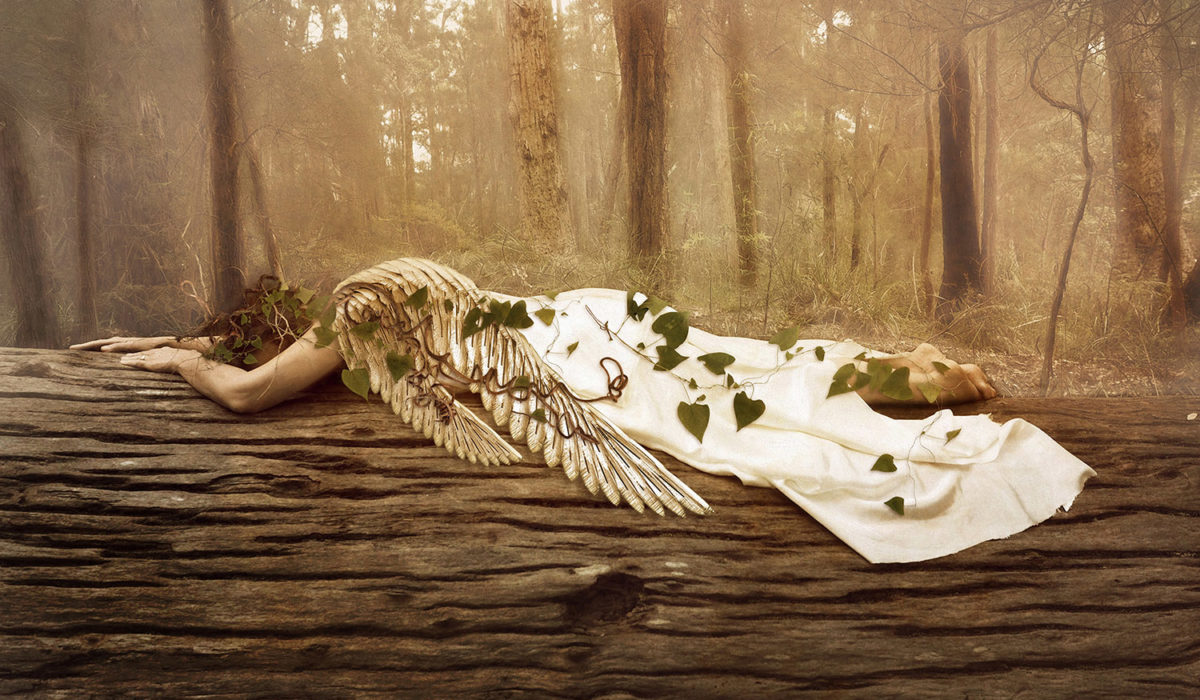Ever since appearing as the featured artist in Issue No. 6 of Living the Photo Artistic Life, Hazel Blake has only continued to impress with her tremendous progress as an artist. I’m excited to bring you this interview with one of the most exciting artistic talents out of Australia today …
Q: How would you define your style, and how is it you keep it consistent?
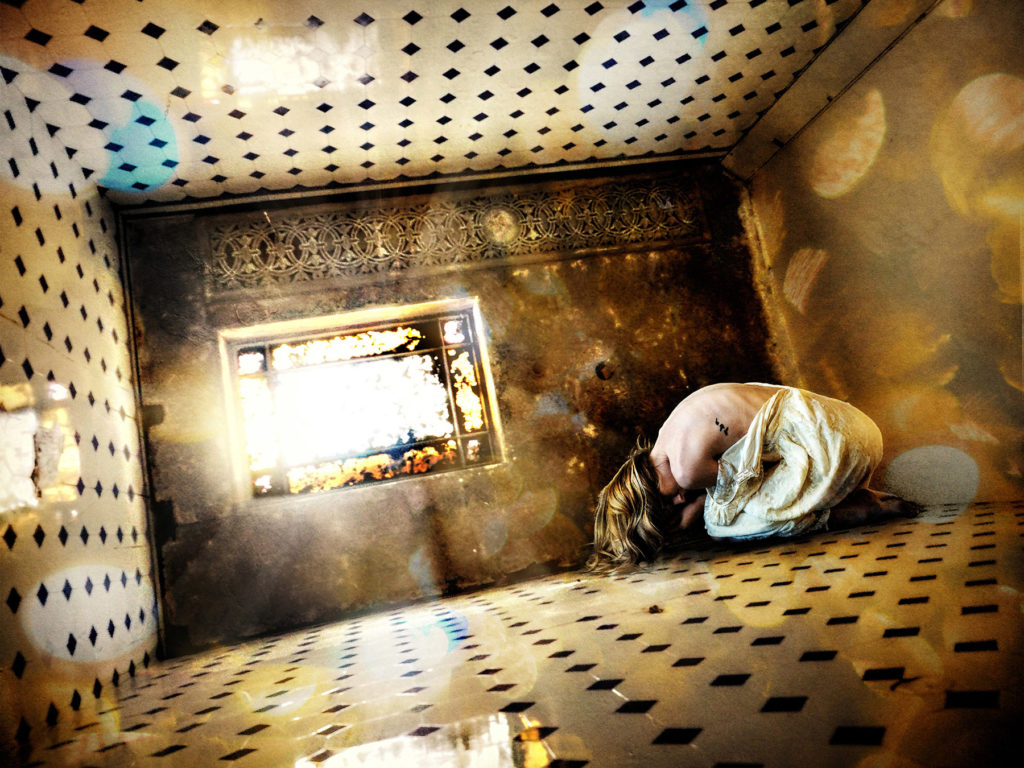
Hazel Blake: I have three broad areas of interest in my work: the divine feminine, the darkness within, and the playful self. Understanding my common themes, and working to establish a visual style reflective of them, has helped me to enjoy a diverse slice of creativity while maintaining my own style and commonalities from piece to piece.
The common themes pervasive in all my work are women, light, and emotion. I would like to add nature, but I am equally drawn to old, dark, derelict places, so I feel that location is not a constant for me. Within the central themes I’ve chosen, however, I feel have honed a story-telling visual style which I believe is emotive, surreal, magical, and timeless. I also have particular style goals that that I enjoy and use constantly in my work, and these appear in varying combinations depending on each piece. The style goals I consistently return to involve combining magical light, a textured and painterly approach, strong and expressive poses, symmetry … and, more recently, symbolism.
I have worked hard to define my art in the past few months and my hope is that now having these styles and goals defined will allow me to maintain a level of consistency that will turn into a portfolio with a strong, clear, identifiable style.
Q: Where do you get your inspiration for your compositions, and what do you most want to convey in your art?
Hazel Blake: In my early years I experienced feeling abandoned by love and I found comfort in the beauty of nature and healing through youthful artistic pursuits. My art was (and still is) a vehicle to heal myself, a journey away from self-hate and disappointment.
In more recent years I have been strongly influenced by my involvements in body politics, feminism, gender politics, sexual liberation, and diversity. I challenge boundaries through my art, push for personal revolution, and demand we all are seen as beautiful in this world.
These days I am compelled to explore women’s realities and emotions — questions of female beauty, physicality, relationships, and our spiritual connections to nature and each other.
Drawing on my own struggles, I invite viewers of my work to find their own empathy and connect with themes such as vulnerability, grief, pain, fragility, power, strength, resilience, spirituality, commonality and our shared histories.
Q: I’ve noticed a trend toward more self-portraiture in your work. What place do you feel this has in your art and creativity?
Hazel Blake: I recently have been exploring self-portraiture; originally not really by preference, but in an online challenge. As it turned out, I found it quite empowering, trying to capture and represent my own beauty. I have been equally stunned by the comments and acknowledgements of people connecting to my art, either by the story itself or in appreciating the courage demonstrated in expressing myself so vulnerably. Including self-portraiture has definitely been an unexpected gift in the continuum of healing and self love.
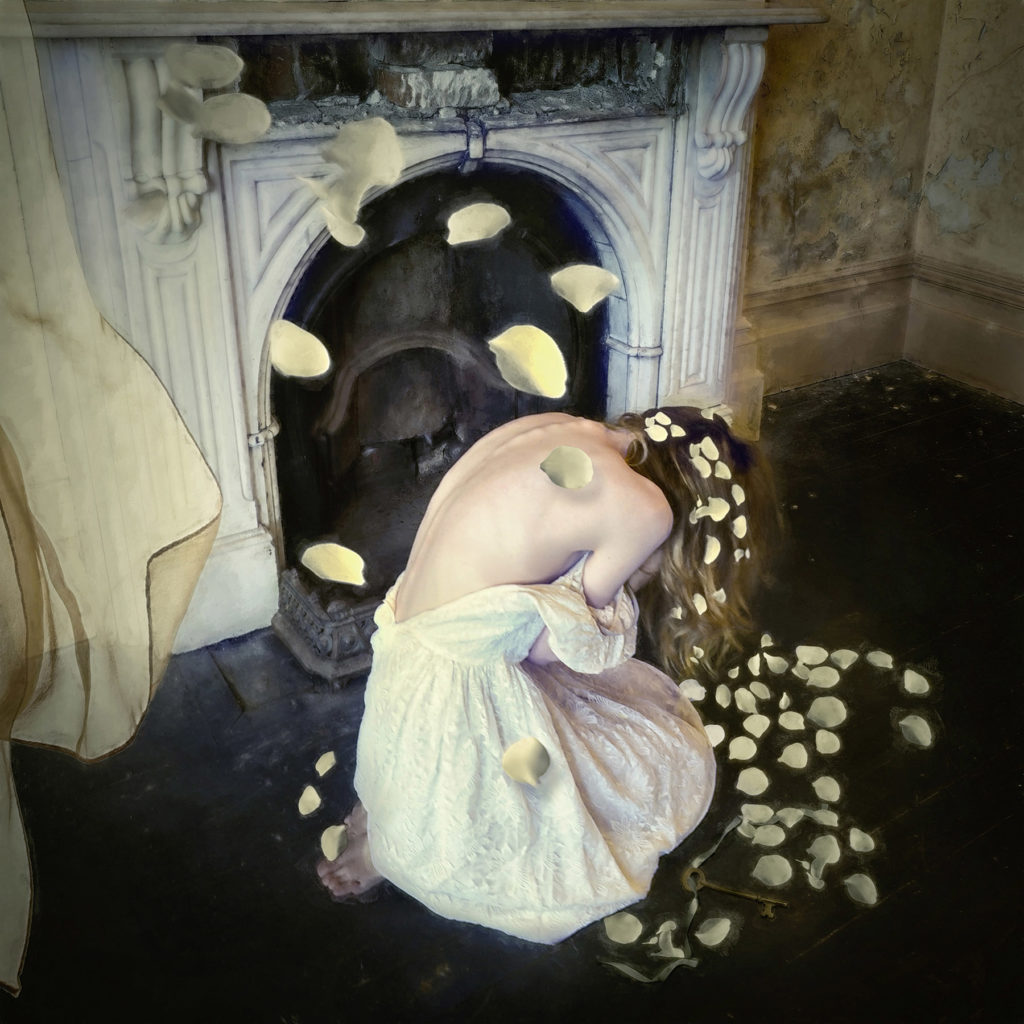
Q: Were you always interested in making art?
Hazel Blake: I drew as a kid, and was quite good, by never felt a real passion for it. I’ve always believed in my creativity, but also I felt I lacked any original ideas or inspiration. Then, in the last couple of years, I have debunked that belief system, and with my recent attendance at the Brooke Shaden workshop, she confirmed what I suspected, that “inspiration is a skill that can be awakened by choosing to look at things differently or more deeply.” I’ve wasted a lot of years believing I wasn’t good enough, but the biggest thing I have learned in my time in the AWAKE group is that I am not only good enough, not only talented enough, but that I really do have unique and original perspectives to share.
Q: You’re quite skilled. How long have you worked with Photoshop?
Hazel Blake: I have been using Photoshop for decades, but mostly to edit photos and create posters. I certainly gained valuable knowledge and speed along the way in the form of retouching and basic compositing. But it was really two years ago when I started on the Photoshop Artistry course and later the AWAKE course — that is when my real learning took off. My skill level improved tenfold thanks to Sebastian Michaels, but my confidence improved a hundredfold with the support and acknowledgement of all the fantastic peers in the private AWAKE group.
Q: Can you outline your usual method of working on a composition?
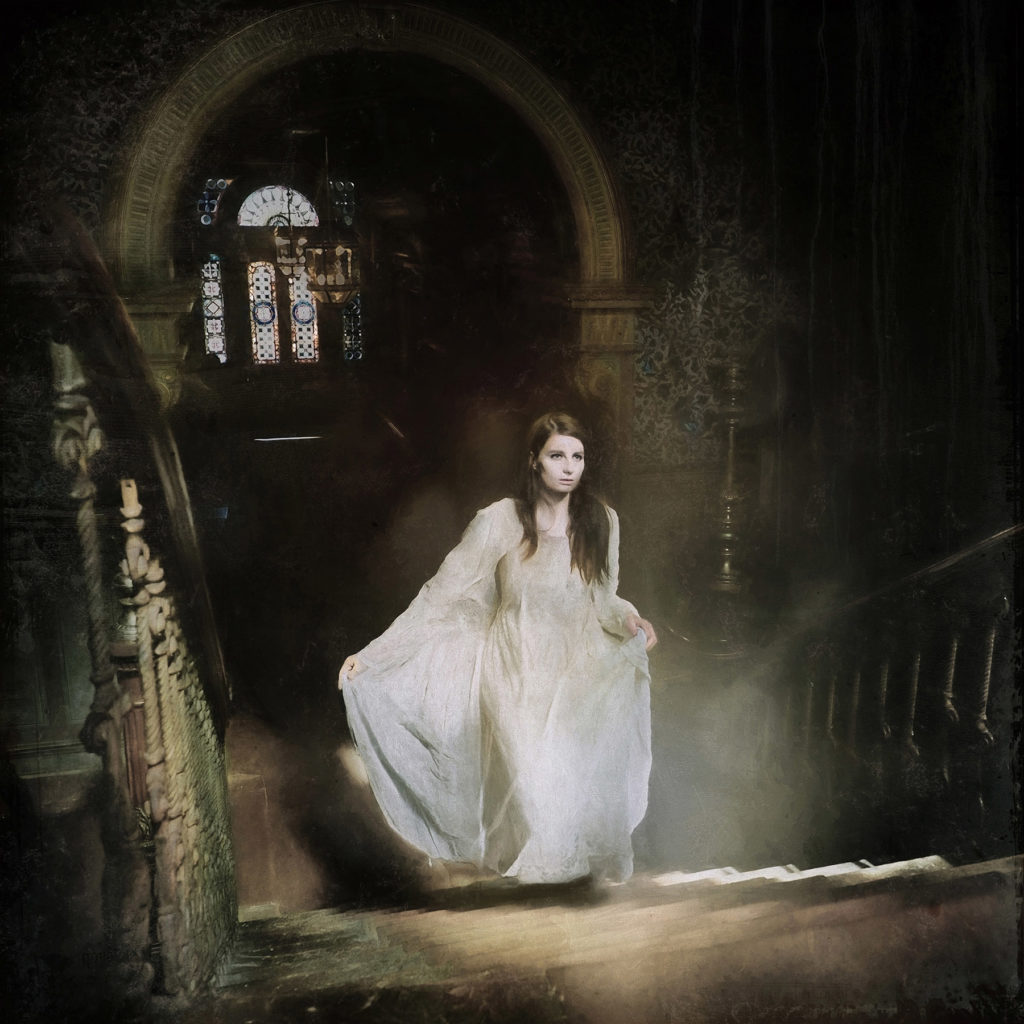
Hazel Blake: Up until this year I was using stock model images and my usual method was to select a photo to work with based on the emotional reaction I had to it. I could to tell if the model needed to be placed in nature or perhaps in some derelict building or in some futuristic environment. And from there I would just let the image create itself, using my intuition to guide the process and produce a composition that was pleasing.
Then, this year, very much like Caroline Julie Moore and others in the AWAKE group, I started photographing my own models. Shooting our own images requires that we as artists consider the story from the blank page on up. This added creative step — imagining a story and working out how I am going to tell it — does turn my previous process on its head quite a bit. It requires me to invoke inspiration to plan what I want to create, rather than simply jump into an existing image. Of course, it doesn’t always turn out the way I plan. I’ve shot models with one story in mind, then later have used the image in a completely different way. So we should never get too caught up in the pressure of it.
Also for me, in the past I would always look for things to add in, to bring more depth or interest to the piece. But this year has been all about paring back. My style has become increasingly minimalist (not only in my art but also in my life). I am moving more toward subject matter that is singularly focused, and then increasing the complexity not by adding other stuff, but rather through lighting and tonal adjustments. I am working on creating images with rich natural colors, a textured painterly style, multiple lighting layers, and many, many adjustment layers tweaking the subtleties of of the light to give as much depth as I can bring to the canvas — all this as a compliment to my moody, surreal, storytelling style.
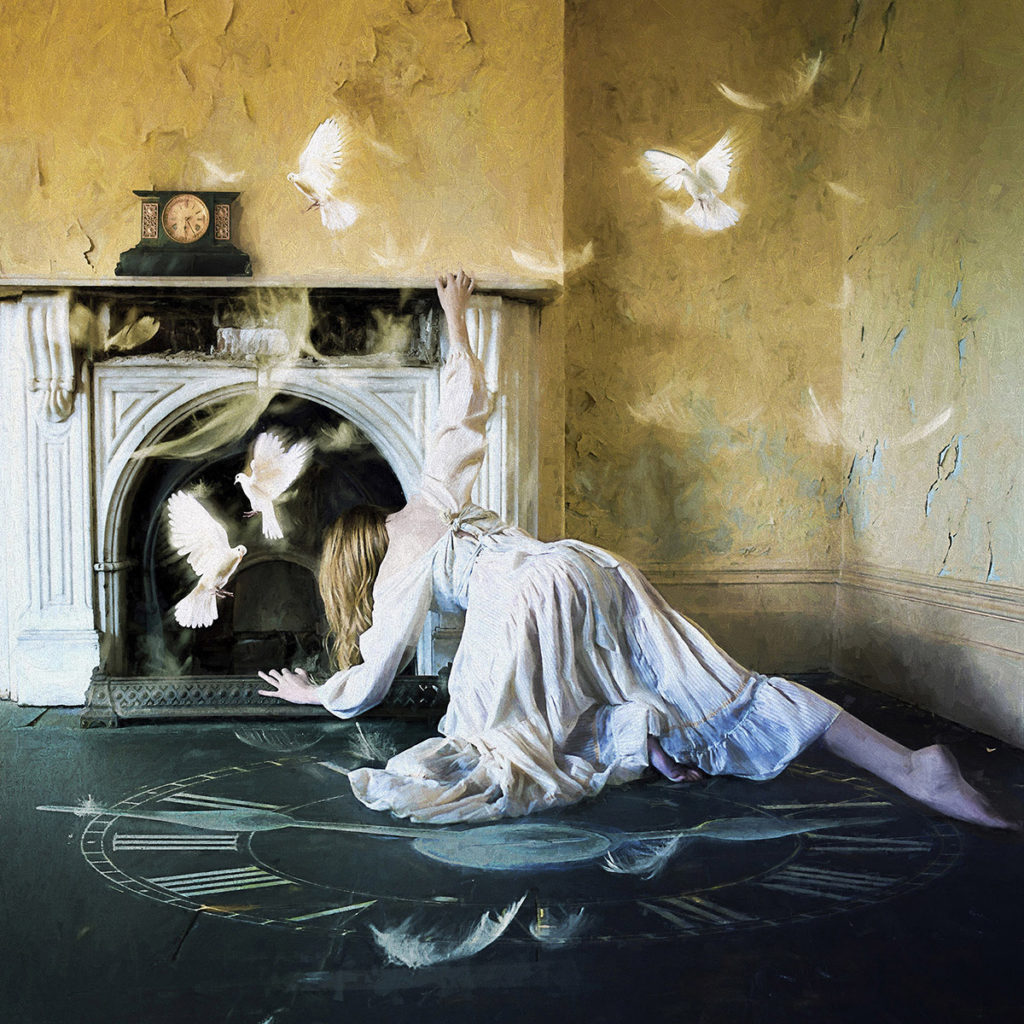 Q: It’s great seeing you bring your photography and Photoshop talents together in your emerging new style. What other skills are important to you in expanding your art?
Q: It’s great seeing you bring your photography and Photoshop talents together in your emerging new style. What other skills are important to you in expanding your art?
Hazel Blake: For me, because I want to tell stories that have meanings that people can connect to, I am learning the value and skill of writing great art statements. Art statements should help the viewer understand the story behind the image, and help them also to connect to me as the artist. As I reflect on the symbolism inherent in the piece, and as I further align my work to it, I feel it helps me bring greater meaning to my stories — which in turn enables me to write clearly about that meaning when I share it with others.
“The Burden of Time” : This image is about those times when we are struggling. Time seems to stand still and it feels like nothing is shifting or every will. We can hardly drag ourselves along. But even if we cannot see it, things around us are moving. The birds represent hope, a shift and ultimately the taking flight again that comes after a period of struggle.
Q: Beyond setting up your business and your website, what other projects have you been working on recently?
Hazel Blake: I am currently involved in a community arts project, involving 10 women from a variety of creative fields. We will be collaborating on a performance meant to tell the stories of the four women mentioned in the lineage of Christ in the Old Testament. I’m excited about the opportunity, and I think it will prove to be very valuable to me as an artist.
Q: Any thoughts or artistic advice you’d like to wrap up with?
Hazel Blake: I believe that when we are creative we are being our most authentic selves, which is why being creative holds out such great value to us individually, as well as in our ability to influence others.
As for advice, I’d say avoid comparing your art to the work of others. Everything we do is unique to us and therefore valuable. Yes, it can be useful to listen to others’ opinions of our work, and that can at times help us determine if we are on the right track … but ultimately, listen to the opinions and then let it go. In the end, if you like your work that is all that matters.
I’d also urge other artists to always keep growing and stretching. Do things that seem to hard or even scare you. Study things you want to master, and then DO them. Conquering our fear expands our world, and I bet it also improves our art.

